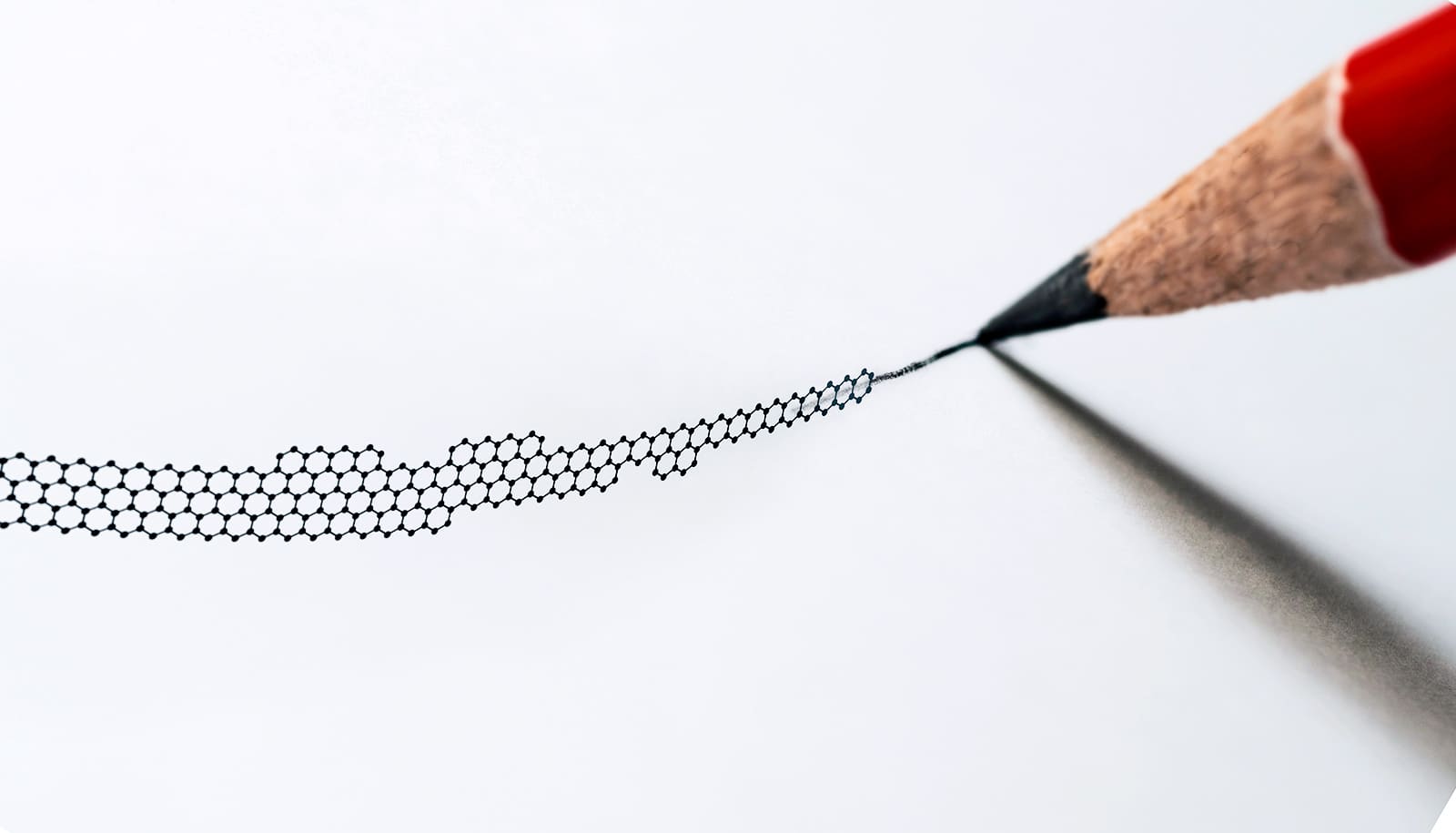Researchers have developed an economical and industrially viable strategy to produce graphene.
The new technique addresses the long-standing challenge of an efficient process for large-scale production of graphene, and paves the way for sustainable synthesis of the material.
Graphene is a two-dimensional material with a honeycomb structure of only one atom thick. Dubbed the material of the future, graphene exhibits unique electronic properties that can potentially be employed for a wide range of applications such as touchscreens, conductive inks, and fast-charging batteries.
The difficulty of producing high-quality graphene affordably on a large scale, however, continues to stand in the way of its widespread adoption by industries.
The conventional method of producing graphene utilizes sound energy or shearing forces to exfoliate graphene layers from graphite, and then dispersing the layers in large amounts of organic solvent. As insufficient solvent causes the graphene layers to reattach themselves back into graphite, yielding one kilogram of graphene currently requires at least one ton of organic solvent, making the method costly and environmentally unfriendly.
The new method, on the other hand, uses up to 50 times less solvent. Researchers achieved by exfoliating pre-treated graphite under a highly alkaline condition to trigger flocculation, a process in which the graphene layers continuously cluster together to form graphene slurry without having to increase the volume of solvent. The method also introduces electrostatic repulsive forces between the graphene layers and prevents them from reattaching themselves.
Graphene on toast could lead to edible electronics
Researchers can easily separate the resulting graphene slurry into monolayers when necessary or store it away for months. They can also use the slurry to 3D-print conductive graphene aerogels, an ultra-lightweight sponge-like material that can remove oil spill in the sea.
“We have successfully demonstrated a unique exfoliation strategy for preparing high quality graphene and its composites,” says study leader Loh Kian Ping, a professor from the chemistry department at the NUS Faculty of Science and head of 2D materials research at the university’s Centre for Advanced 2D Materials.
“Our technique, which produces a high yield of crystalline graphene in the form of a concentrated slurry with a significantly smaller volume of solvent, is an attractive solution for industries to carry out large scale synthesis of this promising material in a cost-effective and sustainable manner,”
Graphene ink could lead to washable electronics
The findings appear in the journal Nature Communications. The researchers collaborated with Fudan University.
Source: National University of Singapore



